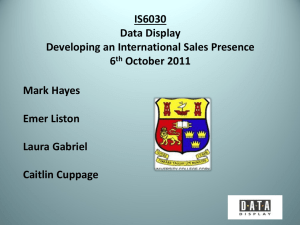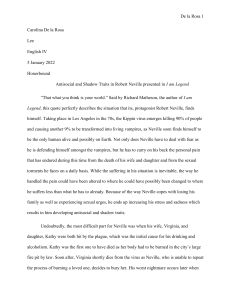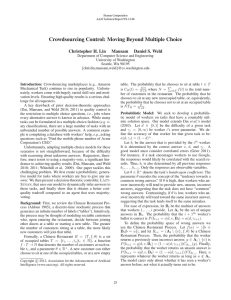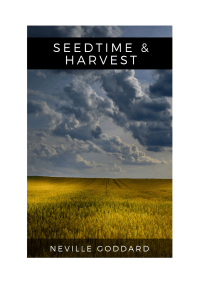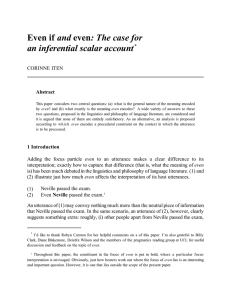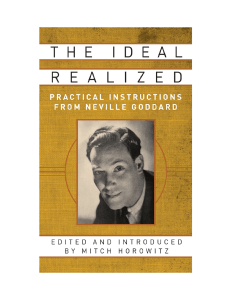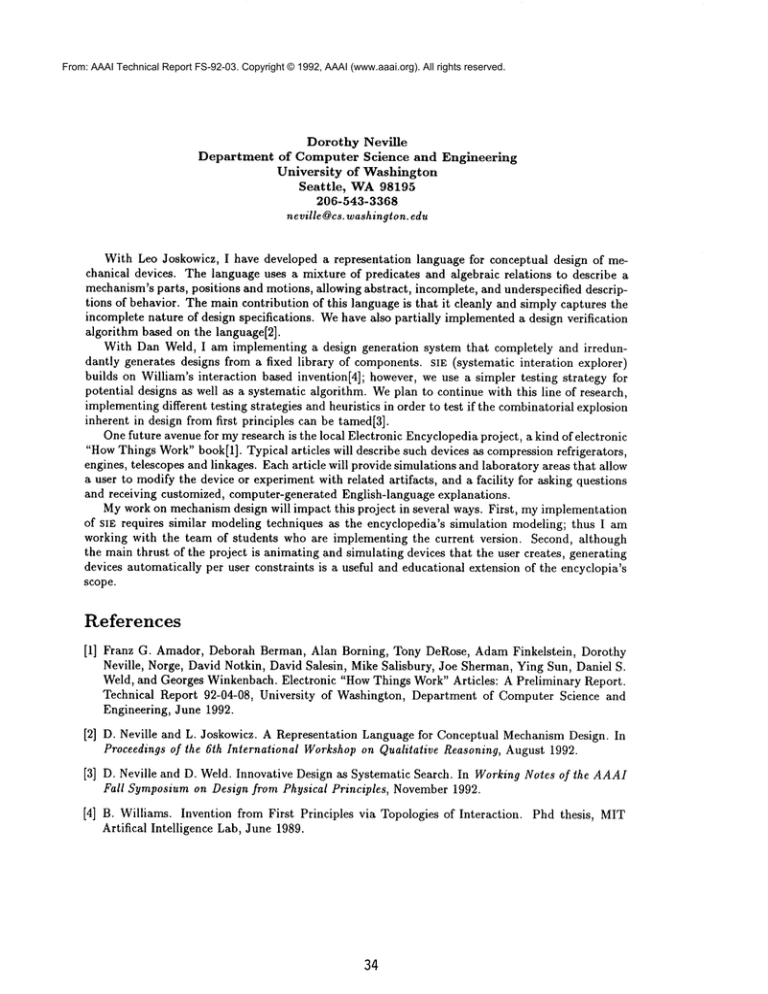
From: AAAI Technical Report FS-92-03. Copyright © 1992, AAAI (www.aaai.org). All rights reserved.
Dorothy Neville
Department of Computer Science and Engineering
University
of Washington
Seattle,
WA98195
206-543-3368
neville @cs.washington, edu
With Leo Joskowicz, I have developed a representation language for conceptual design of mechanical devices. The language uses a mixture of predicates and algebraic relations to describe a
mechanism’sparts, positions and motions, allowing abstract, incomplete, and underspecified descriptions of behavior. The main contribution of this language is that it cleanly and simply captures the
incomplete nature of design specifications. Wehave also partially implementeda design verification
algorithm based on the language[2].
With Dan Weld, I am implementing a design generation system that completely and irredundantly generates designs from a fixed library of components. SIE (systematic interation explorer)
builds on William’s interaction based invention[4]; however, we use a simpler testing strategy for
potential designs as well as a systematic algorithm. Weplan to continue with this line of research,
implementingdifferent testing strategies and heuristics in order to test if the combinatorial explosion
inherent in design from first principles can be tamed[3].
One future avenue for myresearch is the local Electronic Encyclopedia project, a kind of electronic
"HowThings Work"book[l]. Typical articles will describe such devices as compression refrigerators,
engines, telescopes and linkages. Each article will provide simulations and laboratory areas that allow
a user to modify the device or experiment with related artifacts, and a facility for asking questions
and receiving customized, computer-generated English-language explanations.
Mywork on mechanismdesign will impact this project in several ways. First, myimplementation
of sm requires similar modeling techniques as the encyclopedia’s simulation modeling; thus I am
working with the team of students who are implementing the current version. Second, although
the main thrust of the project is animating and simulating devices that the user creates, generating
devices automatically per user constraints is a useful and educational extension of the encyclopia’s
scope.
References
[1] Franz G. Amador, Deborah Berman, Alan Borning, Tony DeRose, AdamFinkelstein,
Dorothy
Neville, Norge, David Notkin, David Salesin, Mike Salisbury, Joe Sherman, Ying Sun, Daniel S.
Weld, and Georges Winkenbach. Electronic "HowThings Work" Articles: A Preliminary Report.
Technical Report 92-04-08, University of Washington, Department of Computer Science and
Engineering, June 1992.
[2] D. Neville and L. Joskowicz. A Representation Language for Conceptual Mechanism Design. In
Proceedings of the 6th International Workshop on Qualitative Reasoning, August 1992.
[3] D. Neville and D. Weld. Innovative Design as Systematic Search. In Working Notes of the AAAI
Fall Symposium on Design from Physical Principles, November1992.
[4] B. Williams. Invention from First Principles
Artifical Intelligence Lab, June 1989.
via Topologies of Interaction.
34
Phd thesis,
MIT




